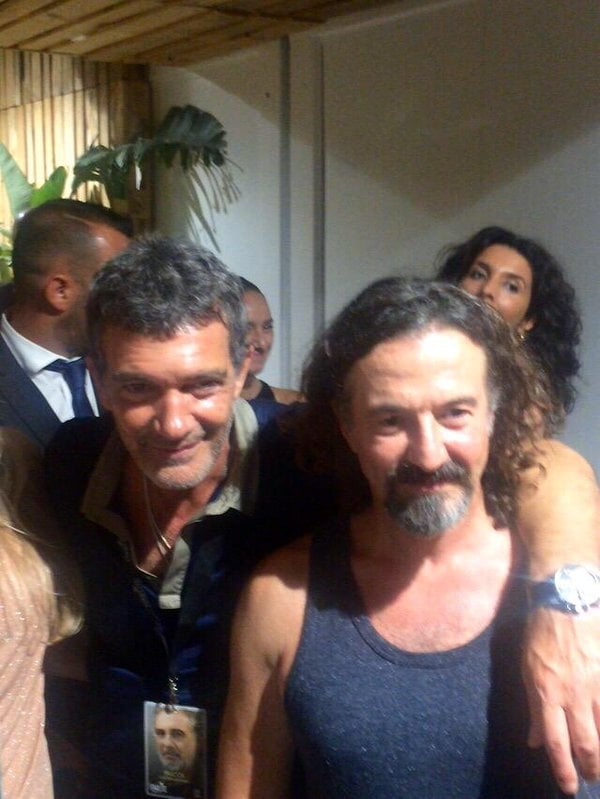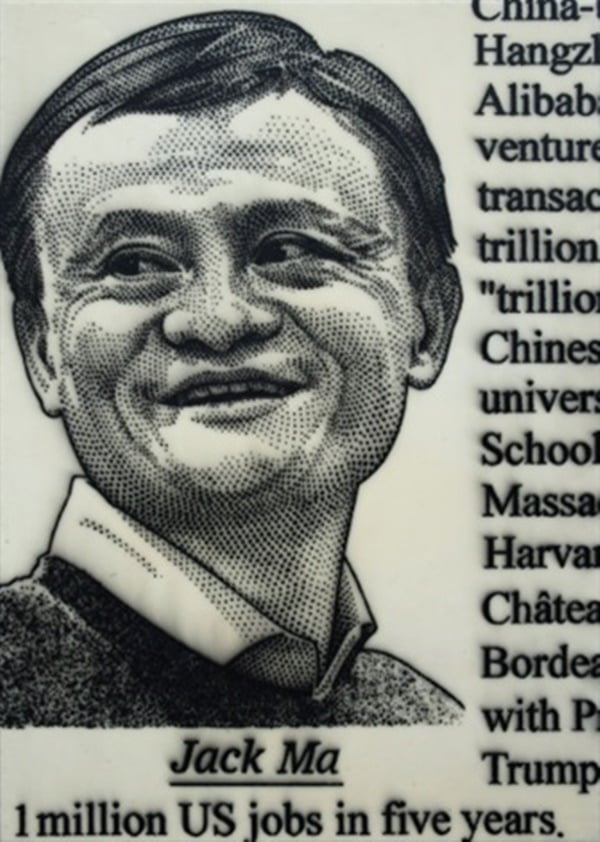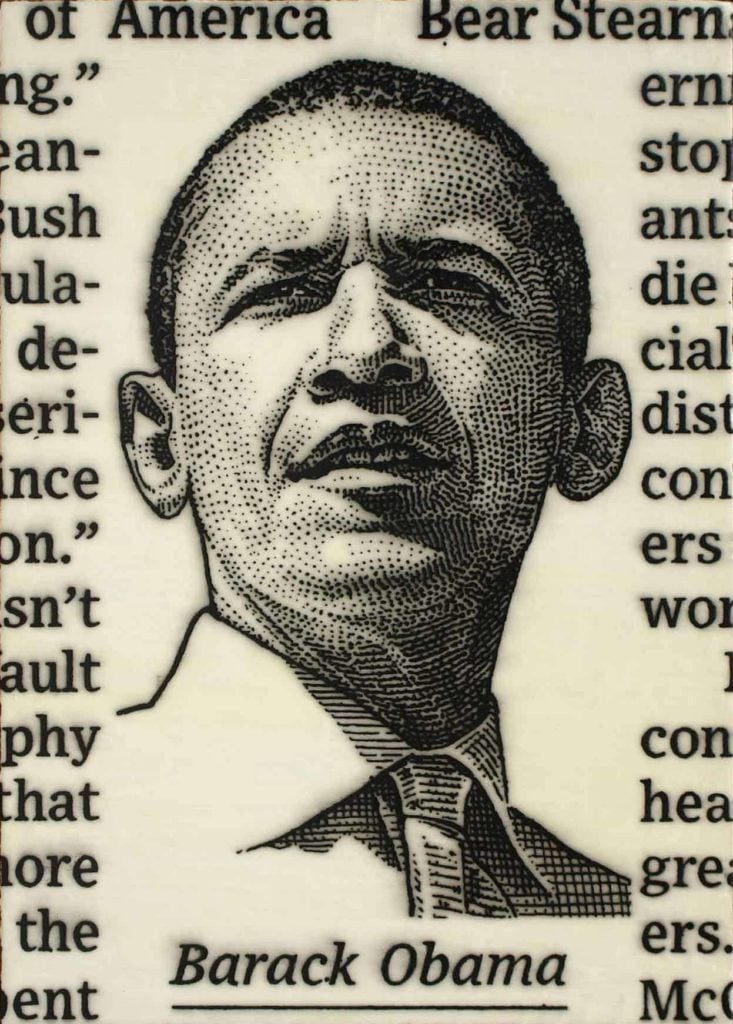People
The Paradise Papers Reveal a Celebrity Spanish Painter’s Shell Corporation—and Uncover a Bizarre, Shadowy Corner of the Art World
José-María Cano has an offshore account in Malta "to carry out the business of art."

José-María Cano has an offshore account in Malta "to carry out the business of art."

Eileen Kinsella

In his native Spain, José-María Cano is probably best known for being part of the mega-successful 1980s band Mecano, whose place in Spanish pop lore is often compared to that of the Beatles in the Anglosphere. Since the turn of the millennium, however, he has reinvented himself as a visual artist, with works selling at auction for prices in the six figures.
It is this latter career that has landed Cano in the crosshairs of journalists investigating this weekend’s globe-spanning Paradise Papers story, a leaked trove of documents that offer a window into how the wealthy hide their money in offshore tax havens all over the world.
As a visual artist, Cano is known for his paraffin wax portrait series “The Wall Street 100,” a commentary on “capitalism, wealth, and power” that involved blowing up Wall Street Journal cartoons of the rich and powerful on large panels. He has also worked with appropriated porn advertisements and auction room scenes.
Cano currently lives in London, in the famous Kensington house where Peter Pan was written in 1904. Previous reports have linked him to celebrity friends like actor Joseph Fiennes and architect David Chipperfield.

Actor Antonio Banderas (L), with artist José-María Cano. Photo via Twitter.
As reported by El Confidential and La Sexta, the Paradise Papers show that the rocker-turned-painter set up a shell corporation called “Jose Maria Cano Studio Limited” in January of this year as an LLC under the Malta Companies Act of 1995.
The “Memorandum of Association” shows the main activity of the LLC is “to carry out the business of art, including but not limited to paintings and commissions.” Other objectives are described as owning, managing, and administering “property of any kind whether belonging to the company or not,” as well as investing, subscribing, holding, purchasing, or otherwise acquiring shares in other companies.
According to Spanish-language media reports, the company was incorporated with the relatively modest sum of €1,200. The owner is Mellow Sun Corporation NV of Curaçao, of which Cano is also the sole shareholder, according to data cited from the Commercial Registry of the Kingdom of the Netherlands. Mellow Sun was established much earlier as an offshore entity, back in 1998, the same year that Mecano broke up.
Just three months after Jose Maria Cano Studio Limited was registered at the beginning of 2017, Cano had what is far and away his biggest success at auction. His work WS100-JACK MA (2017), a portrait of the Chinese founder of Alibaba Group, raked in $414,355 at Sotheby’s Hong Kong in April. That result roughly quadrupled Cano’s previous record. Notably, it was sold at auction the same year it was created.
Cano also has considerable real estate holdings. According to El Confidential, these include a mansion in Lisbon—a recently purchased property on the hill of the castle of San Jorge—valued at €3.5 million, which Cano rents out for private VIP events, and a house in Pozuelo de Alarco in Spain, which is owned through a separate holding company. (The Peter Pan house in which he resides is actually owned by an unidentified business mogul, who purchased it for £7.2 million in 2015.)

José-María Cano, WS100 Jack Ma (2017) sold for $414,000 at Sotheby’s Hong Kong in April
Curiously for someone who has become the face of tax avoidance in the Spanish press, the news stories do not establish or even assert any direct link between the artist, his auction sales, and offshore accounts.
All reports mention the April sale at Sotheby’s Hong Kong, an impressive total for a not particularly well-known celebrity artist. But the connection to tax avoidance remains unclear, since the person consigning the work, not the artist, would presumably be reaping the profits of the sale. According to the catalogue for that sale, WS100-JACK MA was consigned by a “private collection.”
Owing to client confidentiality restrictions, auction houses never disclose who consigns a work for sale unless he or she wishes to be identified (though the house will give a broad outline of the history of a work’s ownership). Neither of the Spanish press reports has identified the consignor of Cano’s record-setting work. But it is extremely unusual for a work of art to have such a quick turnaround between the studio and the auction block, and it is possible that the consignor is or has ties to Cano himself.
Just under 30 of Cano’s works have been offered at auction since 2005, according to the artnet Price Database. What stands out in reviewing the provenance of numerous works is the short ownership chain, with many of the paintings having gone directly from the artist or his gallery to the consignor at auction.
London’s Riflemaker gallery and Milan’s Project B gallery figure in some of the provenance entries. A representative of Project B told artnet News they have not been in touch with the artist for some time. Riflemaker gallery did not immediately respond to artnet News’ request for comment about the Paradise Papers story. Cano could not be reached through either dealer, and declined to comment to Spanish-language media.
The second highest-selling Cano at auction is Milton Friedman (2007), which sold for $120,433 (£74,500) at Christie’s London in October 2013. According to the catalogue, it was first shown by Project B in Milan where it was acquired by the unidentified collector who consigned it to Christie’s.
The rest of Cano’s auction history shows modest, though not exactly rock-star level, auction interest over the last 10 years, with works coming in around $30,000 or $40,000.
If nothing else, the Paradise Papers revelation throws a light on what has been a very odd corner of the art world. According to a 2014 report on his reinvention in El Mundo, Cano was himself an art collector at the height of his success, buying works by painters including Miquel Barceló and Julian Schnabel.
It was through the contacts he made as a collector that he became an artist, El Mundo detailed. Specifically, he got help from famed gallerist Bruno Bischofberger, according to the paper’s sources. The powerful Zurich-based dealer is best known for bringing American pop art to Europe (though the paper also noted that Cano was no longer working with Bischofberger by the time of publication).
The paper notes that Bischofberger “signed Cano, as he had Miquel Barceló in his day.” Although the dealer “has a good nose for launching the careers of new talent” and “knows how to make paintings get a high price at Sotheby’s or Christie’s,” El Mundo reported that it remains difficult to find a Spanish collector who owns work by Cano. (Bischofberger did not immediately respond to a request for comment from artnet News about the nature of his relationship with Cano.)
Among Cano’s biggest successes as an artist came in Prague in 2009. Czech President Vaclav Havel presented then US president Barack Obama with a portrait by Cano, “generously offered” by the artist himself.

Portrait of Obama by José-María Cano, presented to Obama in 2009.
The gift was not, however, without its own controversy. Cano was called out about the Obama portrait by a Wall Street Journal illustrator and artist Noli Novak who called the work “a bold act of plagiarism,” in a 2009 blog post titled “JOSE MARIA CANO, WHAT EXACTLY IS HE DOING?”
At the very least, the Paradise Papers revelations have the art world asking the same question, though in a new context.